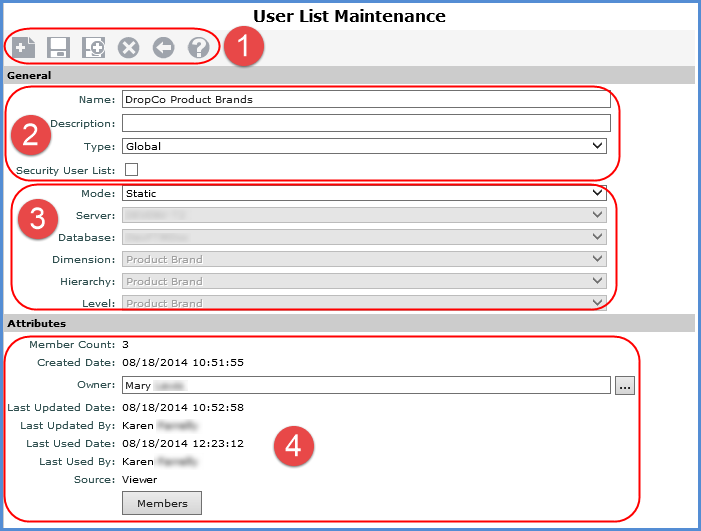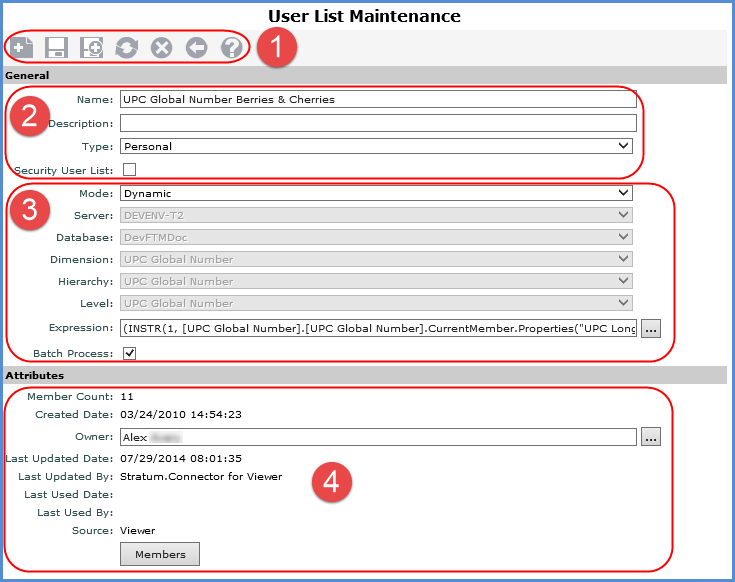

|
|
Toolbar -
|
|
|
Basic General Properties - Use this section of the window to specify the name and description for the list. Description is optional. Other properties are for controlling whether the list will be global or personal and whether or not the list will be a security user list.
|
|
|
Static User List General Properties -
|
|
|
Attributes - This section provides background information about the list. Below the section is a Members button for use in selecting or viewing the members for the static list.
|

|
|
Toolbar -
|
 |
Basic General Properties - Use this section of the window to specify the name and description for the list. Description is optional. Other properties are for controlling whether the list will be global or personal and whether or not the list will be a security user list.
|
|
|
Dynamic User List General Properties -
|
|
|
Attributes - This section provides background information about the list. Below that section is a Members button for use in viewing the members for the dynamic user list.
|